[Update: Tickets for Social Good Summit 2016 are now on sale! Visit socialgoodsummit.com]
Sometimes what starts as a conference culminates in a community. That is how I feel as I look back at some of the learnings of the past 48 hours.
Over the past two days, the Social Good Summit community – made up of grassroots advocates, experts, business leaders, digital influencers, and community and non-governmental leaders – came together to share ideas on how we can build a better world by 2030 in support of the new global goals for sustainable development.
Speakers included heads of United Nations agencies, leaders of major NGOs, celebrities, diplomats, CEOs, and local activists. We also heard from citizens around the world in more than 100 meet ups.
The discussions touched on the biggest challenges of our time and were robust, intense, and motivating. As UN Secretary-General Ban Ki-moon said, “This is a time of fear and heartbreak…but this is also a time for hope.”
Here are five key themes we heard from the Social Good Summit, and you can check out photos, videos, and more at the UN Foundation’s resource page.
1. The global goals are OUR goals
Throughout the summit, speakers from filmmaker and advocate Richard Curtis to former Prime Minister of Norway Dr. Gro Harlem Brundtland emphasized that the global goals belong to all of us. The global goals are the world’s to-do list to end poverty, fight injustice, and stop the threat of climate change. As we heard at the summit, to achieve these goals, it will take more than government action; it will take all of us.
Even more heartening was hearing members of the audience embrace the global goals and talk about what they are doing, and will do, to achieve them.
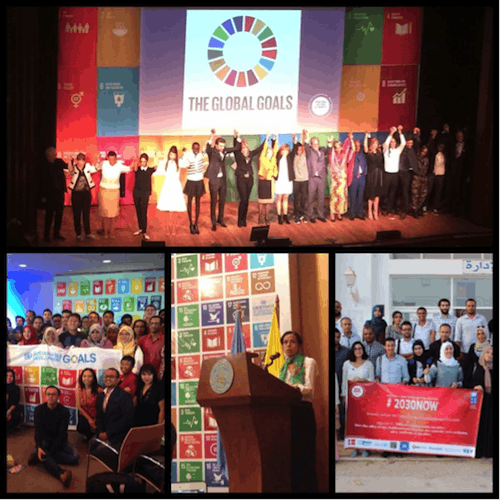
2. Development and aid are about people, not numbers
From panels on the refugee crisis to human rights to music for social good, we were reminded that at the heart of our efforts to create change are real people with personal struggles and stories. Solving global problems is about more than changing statistics; it’s about giving people the chance to improve their lives. Speakers emphasized that groups working to help people need to elevate the voices of people they’re trying to help.
As Martin Jaboksen, who created a music video featuring Syrian refugees said, “If we don’t see people as people, then we don’t see anything anymore.”
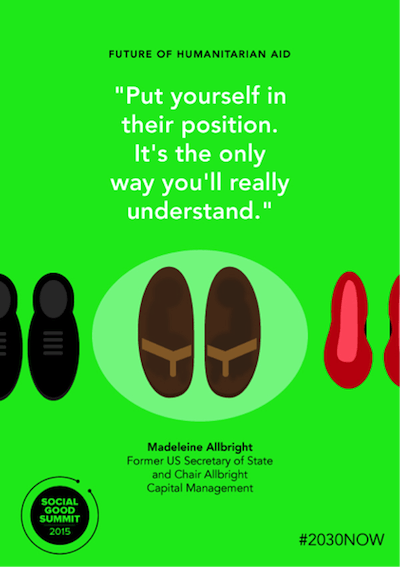
3. Connectivity over geography
“There are no borders online,” said Stacey Martinet of Mashable. Technology helps give everyone a voice and connects voices from around the world to each other.
This point was made crystal clear as the conversation at the Social Good Summit took place in more than 100 countries, from Egypt to Ghana to Vietnam. The UN Development Programme, the +SocialGood community, and engaged citizens from around the world helped take the Social Good Summit global, and thanks to digital communications, the conversations that happened in one country went beyond its borders.
As speakers highlighted, technology not only connects people around the world, it builds awareness and understanding, which are key to mobilizing action for global change.
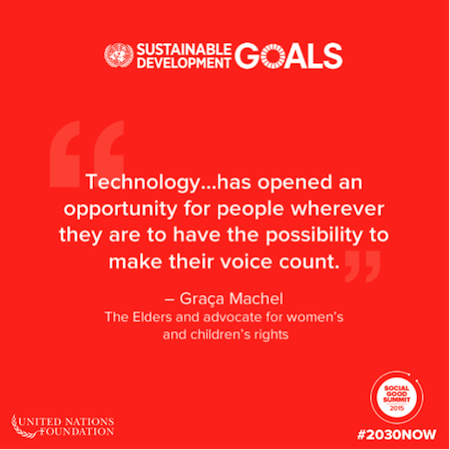
4. The power of youth
Young people are the architects of the future, and they will be leading the charge to achieve the global goals over the next 15 years. Social Good Summit speakers discussed the importance of involving young people in finding global solutions, but the summit also went further, featuring the voices of youth leaders, including Ahmed Mohamed, the 14-year-old student who was arrested for bringing a homemade clock to school.
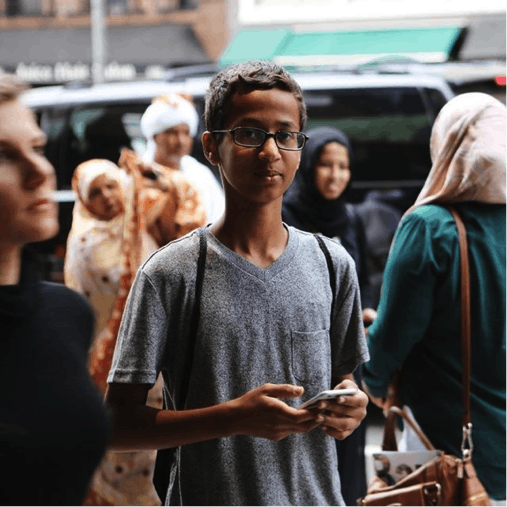
5. Connected challenges, connected solutions
Global challenges are connected. Climate change exacerbates poverty, poverty fuels conflict, and gender inequality contributes to a denial of education for many girls, to name a few examples. The Sustainable Development Goals recognize the complexity and connectedness of today’s problems and lay out a comprehensive agenda to tackle them.
Just as our problems are connected, so are the solutions. As one example, everyone has a stake in educating girls because it’s their right and because it leads to healthier families and economic growth, helping to break the cycle of poverty. At the summit, speakers emphasized the ripple effect of our actions and the importance of working together to drive change.
Simply put: Everything is connected, which means every positive action we take helps build a better world.
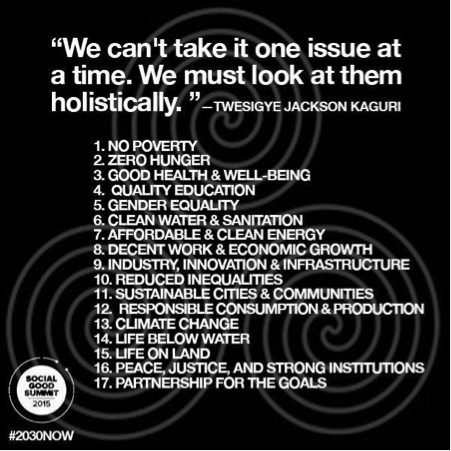
Image 2: Social Good Summit Design fellow, David Rojas – School of Visual Arts, NYC
Image 4: Photo credit – Ben Fitch, Instacorps
Image 5: Social Good Summit Design fellow, Margarita Korol – School of Visual Arts, NYC



 View All Blog Posts
View All Blog Posts